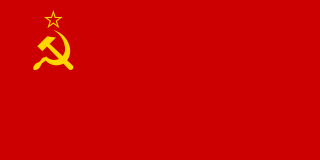Plot
A team of steel erectors is sent to build a blast furnace at a steel mill construction site in a small town. The team is led by foreman Konstantin Tokmakov and crew chief Nikolay Pasechnik, a shockworker of Socialist Labour known for his charm, wit, and popularity among women. Among the workers is welder Katerina Petrashen', an unconventional young woman who smokes (a habit frowned upon as immoral), wears colorful dresses, is not a member of the Komsomol, and behaves in a way deemed provocative by others. Despite their differences, Nikolay and Katerina develop a mutual attraction, though their relationship is complicated by arguments and the interference of Katerina's former suitor, Vasily Khaenko, a gossip and unreliable worker.
Tensions rise when site manager Igor Deryabin orders work to continue during severe weather, resulting in a critical piece of equipment becoming uncontrollable and endangering the construction. Nikolay's courageous actions save the project but lead to a conflict when Deryabin shifts responsibility for the incident to engineer Tokmakov. Later, as prolonged rains delay construction, Nikolay and Tokmakov devise a plan to assemble equipment on the ground, enabling the project to progress despite Deryabin's absence. During the final stage of construction, Nikolay heroically climbs the structure to plant a red flag but falls from a great height, sustaining severe injuries.
While hospitalized, Nikolay is cared for by Katerina, who undergoes a transformation inspired by his determination and the challenges they faced together. She vows to quit smoking, join the Komsomol, and build a better life for herself. Despite his injuries preventing him from joining the team on future projects, Nikolay finds solace in his deepening bond with Katerina, while the construction team celebrates the successful completion of the blast furnace and moves on to their next endeavor. The story highlights themes of resilience, personal growth, and the triumph of human effort.

Novodevichy Cemetery is a cemetery in Moscow. It lies next to the southern wall of the 16th-century Novodevichy Convent, which is the city's third most popular tourist site.

The Soviet Union (USSR) competed at the 1964 Summer Olympics in Tokyo, Japan. 317 competitors, 254 men and 63 women, took part in 154 events in 19 sports.

The Soviet Union (USSR) competed at the 1956 Summer Olympics in Melbourne, Australia. 272 competitors, 233 men and 39 women, took part in 135 events in 17 sports. the Netherlands, Spain, the Netherlands Antilles, Egypt, Lebanon, Cambodia, Iraq and Switzerland protested against this by boycotting the games. As a partial support to the Dutch-led boycott, Soviet athletes under the Olympic flag instead of the national flag.

The Soviet Union (USSR) competed at the 1960 Summer Olympics in Rome, Italy. 283 competitors, 233 men and 50 women, took part in 145 events in 17 sports.

The Girls is a 1961 Soviet romantic comedy-drama directed by Yuri Chulyukin based on a screenplay by Boris Bednyj.
The following is a chronological list of classical music composers who live in, work in, or are citizens of Russia, or who have done so.

The Moscow School of Painting, Sculpture and Architecture, also known by the acronym MUZHVZ, was one of the largest educational institutions in Russia. The school was formed by the 1865 merger of a private art college, established in Moscow in 1832, and the Palace School of Architecture, established in 1749 by Dmitry Ukhtomsky. By the end of the 19th-century, it vied with the state-run St. Petersburg Academy of Arts for the title of the largest art school in the country. In the 20th century, art and architecture separated again, into the Surikov Art Institute in Moscow and the Moscow Architectural Institute ; the latter occupies the historical School buildings in Rozhdestvenka Street.

Nikolai Nikolayevich Rybnikov was a Soviet and Russian film actor. People's Artist of the RSFSR (1981).

People's Artist of the RSFSR was an honorary title granted to Soviet Union artists, including theatre and film directors, actors, choreographers, music performers, and orchestra conductors, who had outstanding achievements in the arts, and who lived in the Russian Soviet Federative Socialist Republic (RSFSR). This title was one rank below Honored Artist of the RSFSR and one above People's Artist of the USSR.

The State Duma of the Federal Assembly of the Russian Federation of the 5th convocation is a former convocation of the legislative branch of the State Duma, lower house of the Russian Parliament. The 5th convocation met at the State Duma building in Moscow, worked from December 24, 2007 to December 21, 2011.

Nikolskoe Cemetery is a historic cemetery in the centre of Saint Petersburg. It is part of the Alexander Nevsky Lavra, and is one of four cemeteries in the complex.
Alexander Borisovich Kosarev was a Soviet-Russian film director, writer, actor, poet and lyricist.
This page is based on this
Wikipedia article Text is available under the
CC BY-SA 4.0 license; additional terms may apply.
Images, videos and audio are available under their respective licenses.








